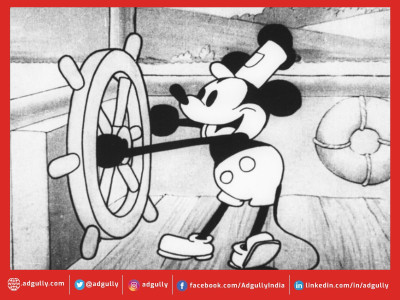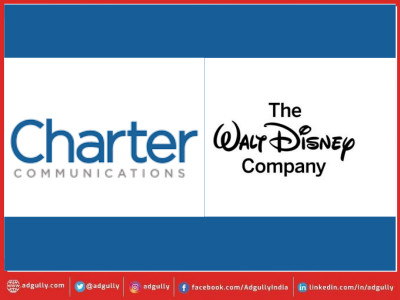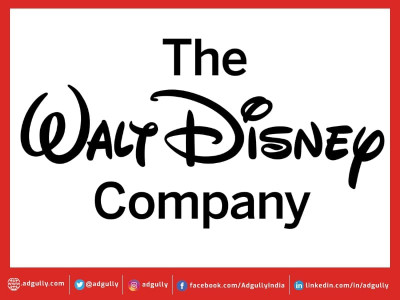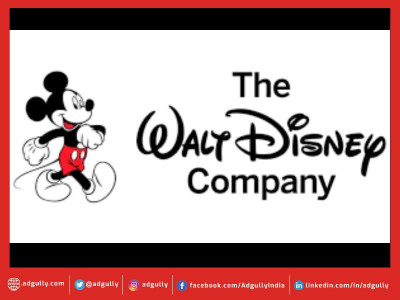The Walt Disney Co.: Full year earnings for 2012 & Q4 results announced
The Walt Disney Company has reported earnings for its fiscal year and fourth quarter ended September 29, 2012. Diluted earnings per share (EPS) for the year increased 24% to $3.13 from $2.52 in the prior year. For the quarter, diluted EPS was $0.68 compared to $0.58 in the prior-year quarter. Excluding certain items affecting comparability as detailed below, EPS for the year increased 21% to $3.07 from $2.54 in the prior year and EPS for the quarter increased 15% to $0.68 from $0.59 in the prior-year quarter.
“Fiscal 2012 was a great year creatively, financially and strategically, resulting in record revenue, net income, and earnings per share,” said Disney Chairman and CEO Robert A. Iger. “The addition of Lucasfilm will further fuel Disney’s creative engine across our company to create additional value for our shareholders and we’re confident the Company is well positioned to continue our strong performance and growth.“
EPS for the current year includes a $184 million non-cash gain recorded in connection with the acquisition of a controlling interest in UTV Software Communication Limited (UTV) and a $79 million recovery of a receivable from Lehman Brothers (Lehman) that was written off in 2008 as a result of the Lehman bankruptcy, partially offset by $100 million of restructuring and impairment charges and a $24 million net charge related to the refinancing of Disneyland Paris borrowings (DLP debt charge). These items benefitted EPS by $0.06. The UTV gain, the Lehman recovery and the DLP
debt charge were recorded in “Other income/(expense), net” in the Consolidated Statement of Income. EPS for the prior year included $75 million of gains from the sales of Miramax and BASS and $55 million of restructuring and impairment charges. These items had a negative impact on EPS of $0.02. EPS for the current quarter includes the Lehman recovery ($79 million), restructuring and impairment charges ($49 million) and the DLP debt charge ($24 million). Collectively, these items had no net impact on EPS. EPS for the prior-year quarter included restructuring and impairment charges of $9 million which had a negative impact on EPS of $0.01.
Media Networks
Media Networks revenues for the year increased 4% to $19.4 billion and segment operating income increased 8% to $6.6 billion. For the quarter, revenues increased 2% to $4.9 billion and segment operating income increased 7% to $1.6 billion.
Cable Networks
Operating income at Cable Networks increased $471 million to $5.7 billion for the year due to growth at ESPN and the worldwide Disney Channels and an increase in equity income. The increase at ESPN was driven by higher affiliate and advertising revenue, partially offset by higher programming costs. Higher affiliate revenue was due to contractual rate increases while the increase in advertising revenue was primarily due to higher rates. The programming cost increase was driven by contractual rate increases for college sports, NFL, Major League Baseball, and NBA programming and expanded rights for the Wimbledon Championships. Growth at the worldwide Disney Channels was driven by higher affiliate revenue due to contractual rate increases domestically and subscriber growth internationally. These increases were partially offset by lower Disney Channel program sales. Increased equity income was driven by growth at A & E
Television Networks (AETN), which reflected higher advertising and affiliate revenues partially offset by higher programming costs.
For the quarter, operating income at Cable Networks increased by $118 million to $1.4 billion due to growth at ESPN, higher equity income at AETN, and improvement at ABC Family, partially offset by lower operating income at the domestic Disney Channels. The increase at ESPN reflected higher contractual rates for affiliate fees, decreased marketing costs, and higher equity income at the ESPN Star Sports joint venture due to lower programming costs. These increases were partially offset by higher programming costs driven by contractual rate increases for college football and Major League Baseball and expanded rights for the Wimbledon Championships. The improvement at ABC Family was primarily due to lower programming and marketing and sales costs. At the domestic Disney Channels, the benefit of higher affiliate revenue due to contractual rate increases was more than offset by a decrease due to a significant program sale that occurred in the prior-year quarter.
Broadcasting
Operating income at Broadcasting remained relatively flat at $915 million for the year as higher program sales, lower programming and production costs and higher affiliate and royalty revenue were largely offset by lower advertising revenues and higher equity losses at Hulu. Program sales growth was driven by Castle and Once Upon a Time, partially offset by lower home entertainment revenues primarily due to Lost. Lower programming and production costs reflected the absence of The Oprah Winfrey Show at the owned television stations and lower program write offs at the ABC Television Network. Lower advertising revenues were driven by lower network ratings, which were partially offset by higher rates, and a decrease at the owned television
stations driven by lower political advertising. Higher equity losses at Hulu were driven by increased programming and marketing costs, partially offset by higher advertising and subscription revenues.
For the quarter, operating income at Broadcasting decreased $9 million to $192 million driven by a decline in ABC Television Network advertising revenues due to lower ratings and higher equity losses at Hulu, partially offset by higher program sales driven by Castle and Wipeout.
Parks and Resorts
Parks and Resorts revenue for the year increased 10% to $12.9 billion and segment operating income increased 22% to $1.9 billion. For the quarter, revenues increased 9% to $3.4 billion and segment operating income increased 18% to $497 million. Results for the year reflected increases at our domestic parks and resorts, Tokyo Disney Resort, Disney Cruise Line and Hong Kong Disneyland Resort, partially offset by a decrease at Disneyland Paris.
Higher operating income at our domestic parks and resorts was driven by increased guest spending and attendance, partially offset by higher costs. Increased guest spending reflected higher average ticket prices, food and beverage spending and daily hotel room rates. Increased attendance reflected strong growth at Disneyland Resort which benefitted from the opening of Cars Land at Disney California Adventure. Higher costs were driven by resort expansion and new guest offerings, including investments in supporting systems infrastructure, labor cost inflation and higher employee benefits costs.
The increase at Tokyo Disney Resort reflected the loss of income in the prior year due to the March 2011 earthquake and tsunami in Japan, which resulted in a temporary suspension of operations and a reduction in volume after reopening, and the collection of related business interruption insurance proceeds in the current year. Operating income growth at Disney Cruise Line was due to increased passenger cruise days driven by the Disney Fantasy and the Disney Dream, partially offset by the related operating costs. Operating income growth at Hong Kong Disneyland Resort was primarily due to guest spending, which was driven by higher average ticket prices and daily hotel room rates, and increased attendance, partially offset by higher costs related to resort expansion. At Disneyland Paris, increased guest spending, driven by higher daily hotel room rates, and higher attendance were more than offset by labor cost inflation and
lower hotel occupancy.
For the quarter, operating income growth reflected increases at Disney Cruise Line, Hong Kong Disneyland Resort, our new Aulani resort and hotel in Hawaii, and Disneyland Paris.
Higher operating income at Disney Cruise Line was driven by increased passenger cruise days driven by the Disney Fantasy, partially offset by the related operating costs. The increases at both Hong Kong Disneyland Resort and Disneyland Paris were driven by higher attendance. Improved results at Aulani reflected a full quarter of operations in the current year compared to the prior-year quarter which included pre-opening costs.
Results for the quarter at our domestic parks and resorts were comparable to the prior-year quarter as increased guest spending at Disneyland Resort and Walt Disney World Resort and increased attendance at Disneyland Resort were largely offset by higher operating costs. The guest spending increase reflected higher average ticket prices, daily hotel room rates and food and beverage spending. Higher operating costs were driven by resort expansion and new guest offerings, including investments in supporting systems infrastructure, labor cost inflation, and higher employee benefits costs.
Studio Entertainment
Studio Entertainment revenues for the year decreased 8% to $5.8 billion and segment operating income increased 17% to $722 million. For the quarter, revenues decreased 4% to $1.4 billion and segment operating income decreased 32% to $80 million. The revenue decline for the year was driven by fewer theatrical releases in the current year and lower home entertainment sales volume. Higher operating income for the year was driven by increases in domestic theatrical and worldwide television distribution, partially offset by higher film cost write-downs.
Domestic theatrical operating income growth reflected the strong performance of Marvel’s The Avengers in the current year, partially offset by marketing costs for Frankenweenie, which was released after the fiscal year-end. The revenue decline from fewer theatrical releases was largely offset by a decrease in the related distribution and marketing costs and production cost amortization.
In worldwide television distribution, lower revenues from the domestic markets were largely offset by higher international syndication revenues. The increase in operating income was due to a lower average production cost amortization rate on current-year titles.
For the quarter, lower segment operating income was driven by a decrease in worldwide theatrical results and higher film cost write-downs, partially offset by improved results in worldwide home entertainment.
Lower worldwide theatrical operating income was driven by the performance of Brave in the current quarter compared to Cars 2 in the prior-year quarter and the prerelease marketing expense for Frankenweenie in the current quarter. Improved home entertainment results were driven by the strong performance of Marvel’s The Avengers in the current quarter.
Consumer Products
Consumer Products revenues for the year increased 7% to $3.3 billion and segment operating income increased 15% to $937 million. For the quarter, revenues increased 8% to $883 million and segment operating income increased 29% to $267 million.
Higher segment operating income for both the year and quarter was primarily due to increases at Merchandise Licensing and our retail business as well as favorable foreign currency impacts. At Merchandise Licensing, the increase for the year and quarter was driven by earned royalty growth reflecting the strong performance of Spider-Man, Avengers, and Minnie and Mickey merchandise in the current year and an increase in Japan as a result of the impact of the earthquake and tsunami which occurred in the second quarter of the prior year. These increases were partially offset by lower sales of Cars and Toy Story merchandise. Licensing results for the current year also benefitted from lower revenue share with Studio Entertainment and higher guaranteed shortfall recognition. The revenue share impact was due to a lower mix of revenues from properties subject to revenue share in the current year reflecting the strong prior-year
sales of Cars merchandise.
At our retail business, higher operating income for the year and quarter was driven by new stores in North America and Europe and higher online sales.
Interactive
Interactive revenues for the year decreased 14% to $845 million and segment operating results improved $92 million to a loss of $216 million. For the quarter, revenues decreased 14% to $191 million and segment operating results improved $18 million to a loss of $76 million.
Improved segment operating results for the year reflected an increase at our social games business and higher allocations to other Company businesses, primarily related to website design and maintenance, partially offset by a decrease at our console game business.
Social game results reflected lower acquisition accounting impacts and improved title performance in the current year. Lower console game results were driven by a decline in sales volume from fewer significant releases which was partially offset by lower marketing costs, higher minimum guarantee recognition and decreased product development costs. The reduction in console games product development reflected an ongoing shift from console game releases to mobile and social game releases.
For the quarter, improved operating results were primarily due to lower acquisition accounting impacts at our social games business and higher allocations to other Company businesses related to website design and maintenance, partially offset by a decrease at our console game business driven by fewer significant titles in release in the current quarter.
















Share
Facebook
YouTube
Tweet
Twitter
LinkedIn